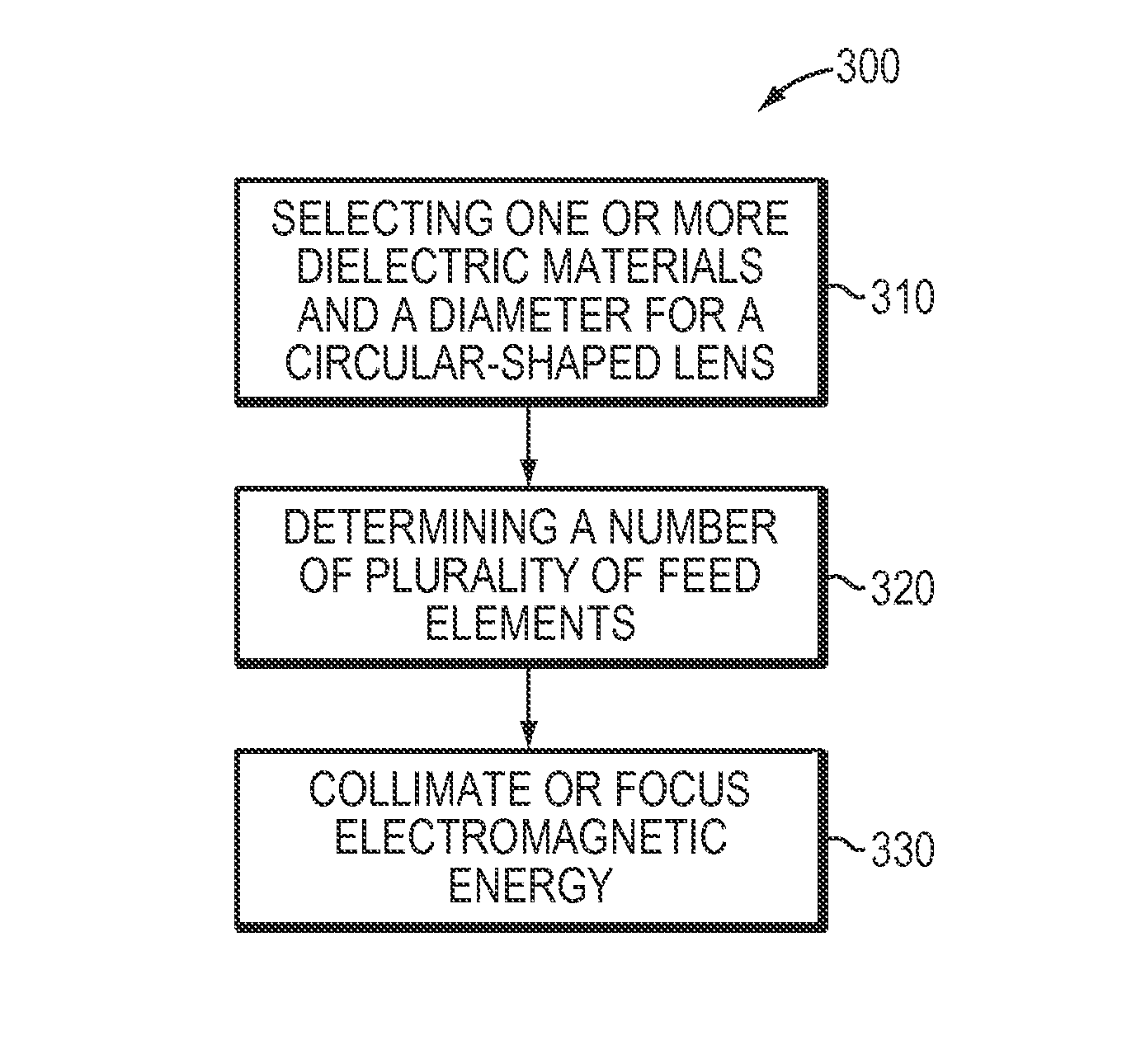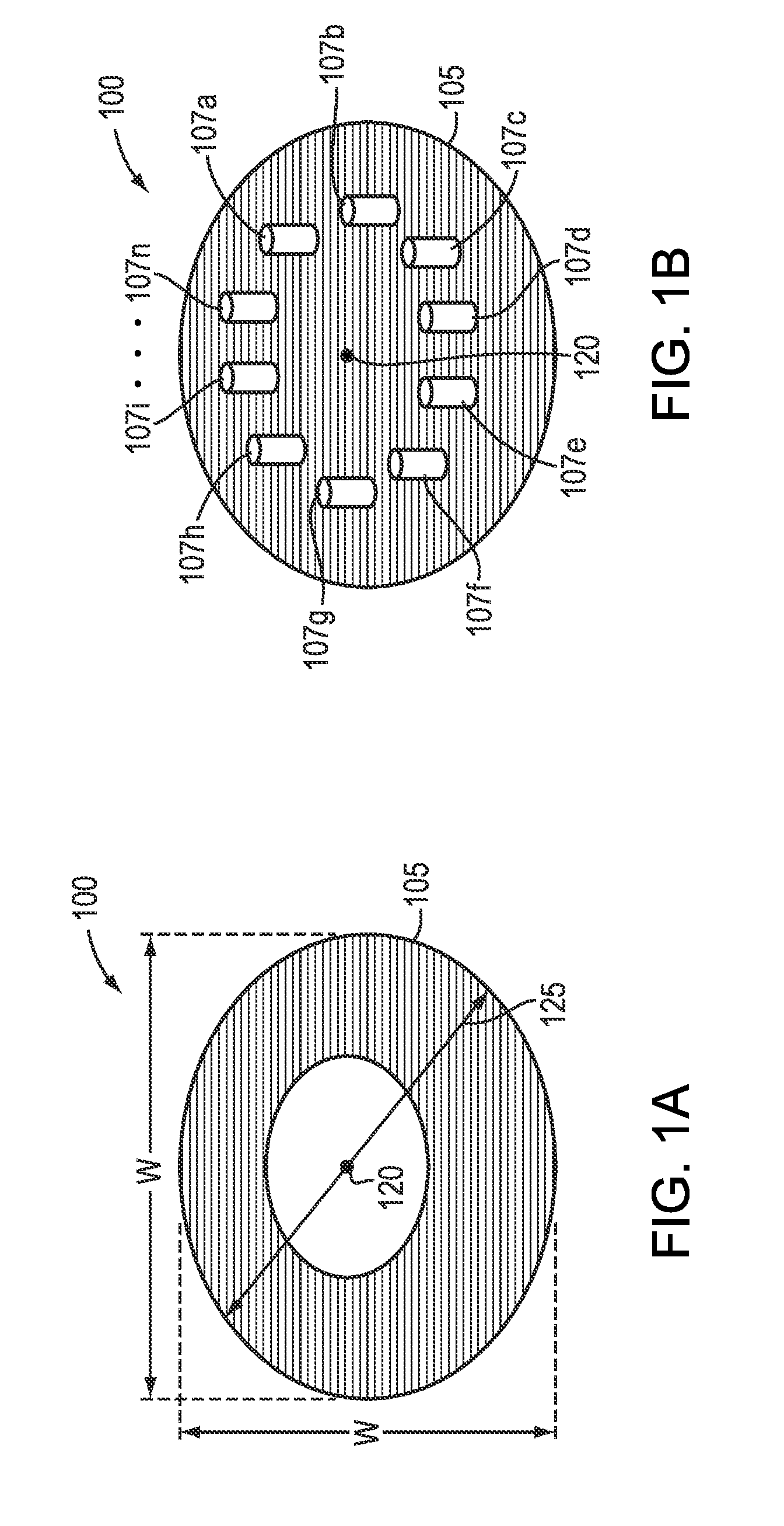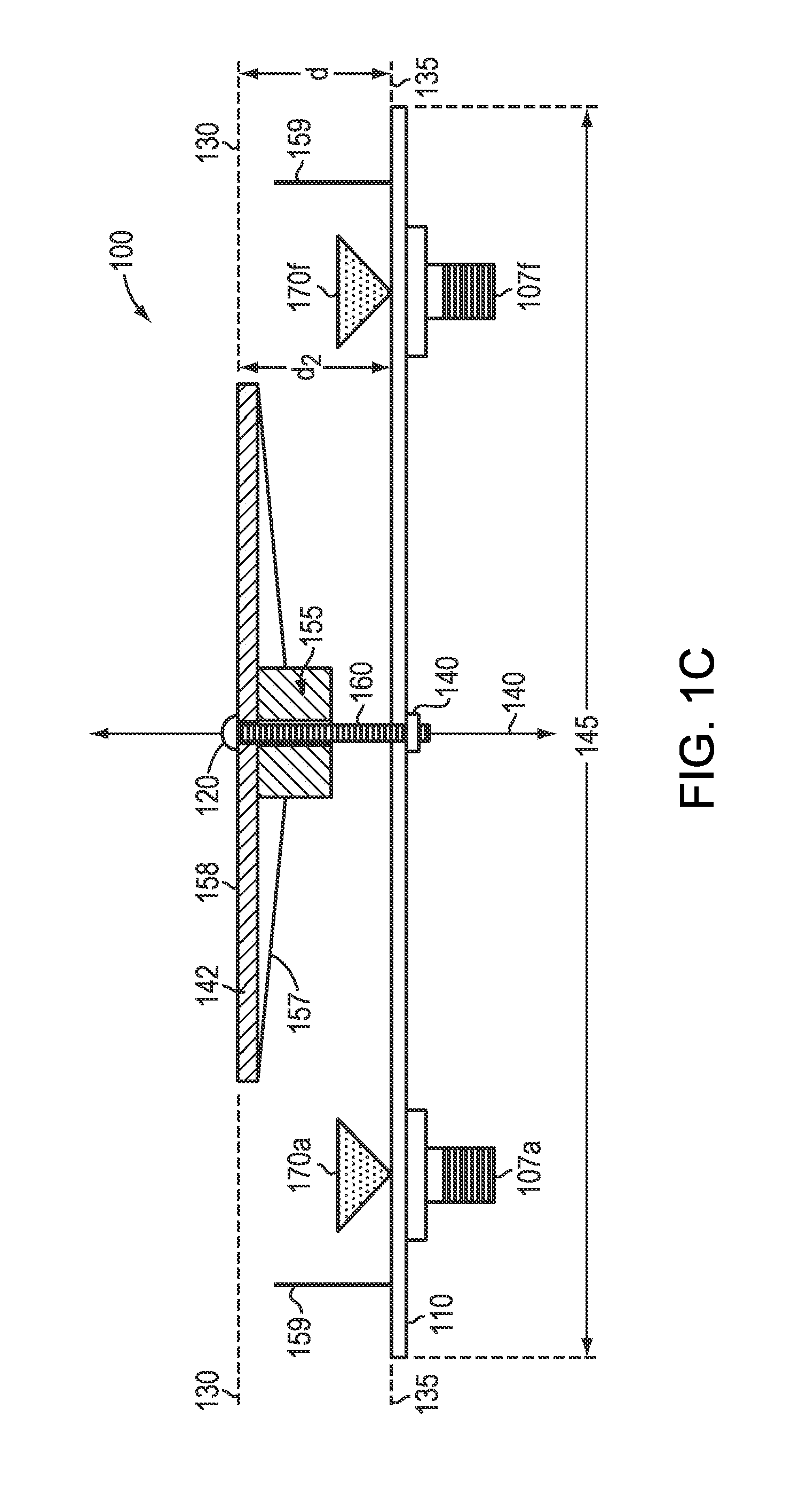Low-profile multiple-beam lens antenna
a technology of multiple beams and antennas, applied in antennas, antenna details, electrical equipment, etc., can solve the problems of increasing fuel consumption of commercial and military vehicles and aircraft, reducing mission range, and large height, and achieve the effect of low cost and low cos
- Summary
- Abstract
- Description
- Claims
- Application Information
AI Technical Summary
Benefits of technology
Problems solved by technology
Method used
Image
Examples
Embodiment Construction
[0026]FIG. 1A is a diagram showing a top down view of an antenna 100, according to an illustrative embodiment of the invention. FIG. 1B is a diagram showing a bottom up view of the antenna of FIG. 1A, according to an illustrative embodiment of the invention. FIG. 1C is a diagram showing a cross-sectional view of the antenna of FIG. 1A, according to an illustrative embodiment of the invention. The following discussion refers to elements shown in FIG. 1A, FIG. 1B, and FIG. 1C.
[0027]The antenna 100 includes a circular-shaped lens 105, a plurality of feed elements 170a, 170f, . . . , 170n, generally, 170. In some embodiments, the antenna 100 includes a mounting plate 110. In some embodiments, the antenna 100 weighs 259 grams.
[0028]The circular-shaped lens 105 includes a center 120, a diameter 125, and an axis of rotation 140. The circular-shaped lens 105 is disposed within a volume that includes a width w, a depth d, a first surface 130, and a second surface 135. The width w is substant...
PUM
 Login to View More
Login to View More Abstract
Description
Claims
Application Information
 Login to View More
Login to View More - R&D
- Intellectual Property
- Life Sciences
- Materials
- Tech Scout
- Unparalleled Data Quality
- Higher Quality Content
- 60% Fewer Hallucinations
Browse by: Latest US Patents, China's latest patents, Technical Efficacy Thesaurus, Application Domain, Technology Topic, Popular Technical Reports.
© 2025 PatSnap. All rights reserved.Legal|Privacy policy|Modern Slavery Act Transparency Statement|Sitemap|About US| Contact US: help@patsnap.com



